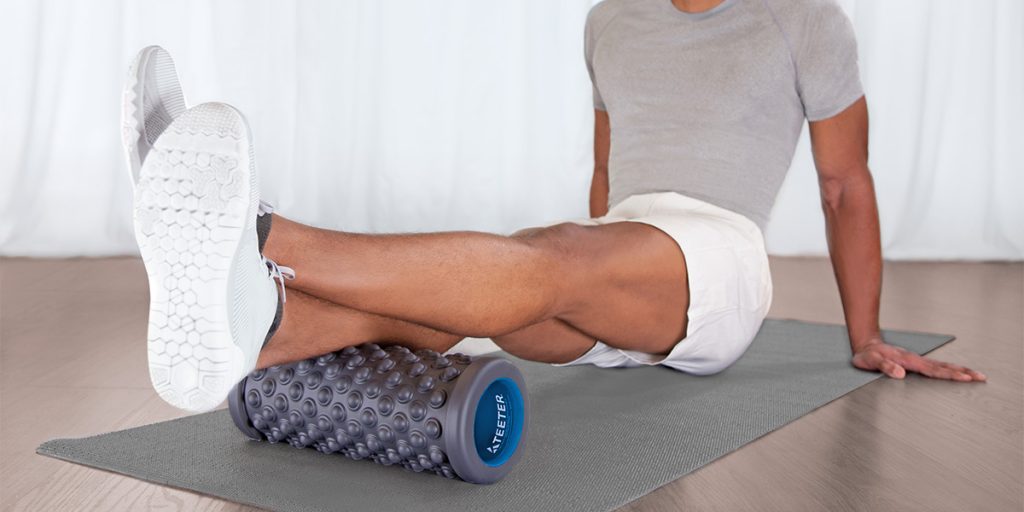
Back pain is a common complaint that affects millions of people around the world. It can range from mild discomfort to debilitating pain that affects daily life. While there are many potential causes of back pain, including injury, poor posture, and underlying medical conditions, there are also many treatment options available. One such option is foam rolling. Foam rolling is a form of self-massage that involves using a foam roller to apply pressure to specific areas of the body. In this article, we’ll explore the question of whether foam rolling can help with back pain.
What is foam rolling?
Foam rolling is a form of self-massage that uses a foam roller to apply pressure to specific areas of the body. By doing so, you can break up adhesions and knots in the muscles and connective tissue, improve circulation, and increase range of motion. Foam rolling can be done before or after exercise, or any time you’re feeling particularly tight or uncomfortable.
How does foam rolling help with back pain?
Foam rolling can be an effective way to alleviate back pain and promote healing. Here’s how:
1.Loosens tight muscles
Tight muscles are a common contributor to back pain. Foam rolling can help to loosen up tight muscles, reducing tension and discomfort. By applying pressure to specific areas of the back, you can break up adhesions and knots in the muscles, improving circulation and promoting healing.
2.Increases range of motion
Limited range of motion is another common cause of back pain. By using a foam roller to massage the muscles and connective tissue around the spine, you can increase flexibility and mobility. This can help to prevent future injuries and reduce existing pain.
3.Reduces inflammation
Inflammation is a common cause of back pain, particularly in cases of injury or underlying medical conditions such as arthritis. Foam rolling can help to reduce inflammation by improving circulation and promoting the release of anti-inflammatory chemicals in the body.
4.Promotes relaxation
Stress and tension can contribute to back pain. Foam rolling can help to promote relaxation by stimulating the parasympathetic nervous system. This can help to reduce stress and tension in the body, promoting healing and reducing pain.
What areas should you foam roll for back pain?
There are several areas of the back that can benefit from foam rolling:
1.Upper back
The upper back is a common area of tension for many people, particularly those who sit at a desk for long periods of time. To foam roll your upper back, lie on your back with the foam roller under your shoulder blades. Cross your arms over your chest and slowly roll up and down the length of your upper back. Focus on any areas that feel particularly tight or tender.
2.Lower back
The lower back is a common area of pain for many people, particularly those who lead a sedentary lifestyle or engage in activities that involve heavy lifting. To foam roll your lower back, lie on your back with the foam roller under your sacrum (the bony part at the base of your spine). Bend your knees and place your feet flat on the floor. Use your feet to push your hips up and roll up and down the length of your lower back. Focus on any areas that feel particularly tight or tender.
3.Glutes
The glutes are the muscles of the buttocks and are closely connected to the muscles of the lower back. Tight glutes can contribute to lower back pain. To foam roll your glutes, sit on the foam roller with your knees bent and your feet flat on the floor. Cross your right ankle over your left knee and lean onto your right hip. Roll up and down the length of your right glute, focusing on any tight or tender areas. Repeat on the left side.
4.Hip flexors
The hip flexors are the muscles that run from your pelvis to your thigh bone and are responsible for lifting your leg. Tight hip flexors can contribute to lower back pain. To foam roll your hip flexors, lie face down on the foam roller with the roller under your hip flexors. Use your arms to lift your upper body off the floor and roll up and down the length of your hip flexors. Focus on any areas that feel particularly tight or tender.
When should you foam roll for back pain?
Foam rolling can be done before or after exercise, or any time you’re feeling particularly tight or uncomfortable. Some people find that foam rolling before a workout helps to warm up their muscles and prevent injury. Others prefer to do it after a workout as a way to cool down and promote recovery. You can also foam roll on days when you’re not exercising, particularly if you’re experiencing ongoing back pain.
Conclusion
Foam rolling can be an effective way to alleviate back pain and promote healing. By incorporating foam rolling into your regular routine, you can keep your muscles feeling loose and healthy. Remember to start with light pressure and gradually increase as needed, and focus on the specific areas that are causing you discomfort.

